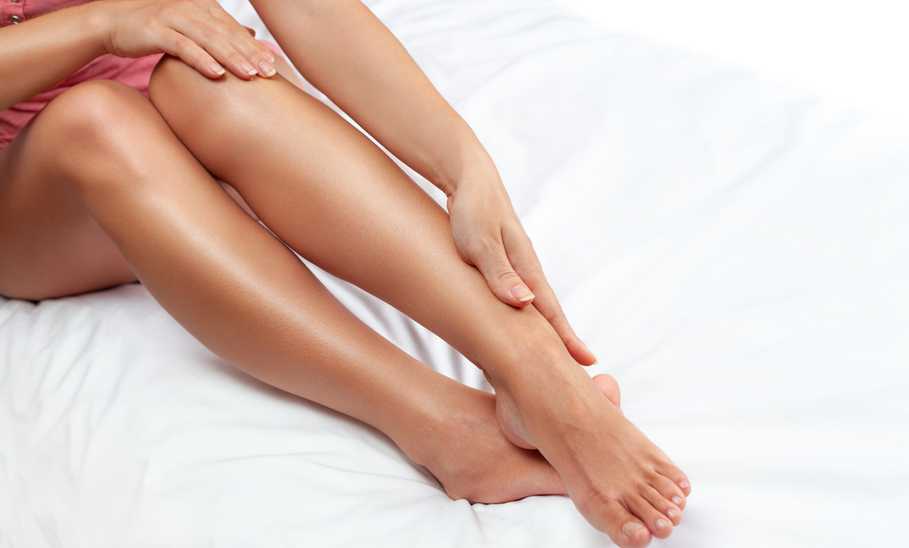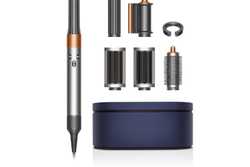How Long Does Laser Hair Removal Last? Professionals Weigh in on What to Expect

Our evaluations and opinions are not influenced by our advertising relationships, but we may earn a commission from our partners’ links. This content is created by TIME Stamped, under TIME’s direction and produced in accordance with TIME’s editorial guidelines and overseen by TIME’s editorial staff. Learn more about it.
After spending hundreds of dollars on a home laser device or going to the dermatologist for professional hair removal treatments, there’s one question that you’ll be left asking yourself: How long will it last? Well, this depends on the treatment method used, hair type, and frequency. However, the ultimate goal is to stop hair growth for an extended period of time.
To help answer this question, I spoke with dermatologists and estheticians about laser hair removal, from how it works to the side effects and risks of this treatment.
At the most basic level, laser hair removal works by using concentrated light to inhibit hair growth over time. “Every laser has a specific chromophore target, which is a molecule in which a given material absorbs a wavelength,” says Jackie Habashy Hakim, MD, a double board-certified dermatologist specializing in cosmetic, surgical, and medical dermatology. “Laser hair devices work by targeting the pigment chromophore found in the hair follicle.”
For example, the RoseSkinCo. Lumi uses intense pulsed light (IPL) to target hairs at the root and stop growth, whereas the JOVS Venus Pro II uses Optimal Pulsed Technology (OPT) to aid in the hair removal process.
Read more: How Does Laser Hair Removal Work?
While many hope laser hair removal will offer permanent results, that’s usually not the case. “It significantly reduces hair growth to the point that you can stop shaving altogether, but it doesn't guarantee permanent hair removal,” says Kiran Mian, DO, FAAD, medical and aesthetic dermatologist at Hudson Dermatology & Laser Surgery in New York. “However, when hair regrows, it's usually finer and lighter in color, and usually only touch ups are needed.”
The longevity of laser hair removal varies based on different factors, including hair color, type, and method used. “Results typically last for years, but some hair can regrow in time, which is why we encourage maintenance sessions,” says Dr. Hashaby Hakim.
At-home laser hair removal devices will generally have a shorter lifespan than professional in-office treatments that can last longer—between 10 to 15 years in some cases, according to Michelle Henry, MD, FAAD, board-certified dermatologist and founder of Skin & Aesthetic Surgery of Manhattan.
Skin and hair color do impact the effectiveness of laser hair removal. “The best results are seen in individuals with light skin and dark hair because the laser targets the contrast in color between the hair and skin,” says Dr. Mian.
Dr. Henry adds that light hair colors like blonde and gray are hard to treat since there’s less pigment in the follicle for the laser to target.
In terms of skin color, Daniel P. Friedmann, MD, FAAD, a dermatologist at Westlake Dermatology in Austin, Texas, notes that dark-skinned or tan patients, however, should only have laser treatment with a long wavelength (e.g. 1064 nm), since it will not compete with their background skin color.
Both home laser devices and professional laser hair removal treatments have side effects and risks that you’ll want to consider ahead of time.
“Most commonly, laser burns can be seen if the incorrect settings are used, this is strongly dependent on who is operating the laser,” says Dr. Habashy Hakim. “Rarely, some patients can experience paradoxical hypertrichosis, which can cause the hair to become thicker and stronger.”
Other potential side effects may include skin irritation, pigment changes, blistering, and scarring, according to Dr. Mian.
There’s no set time frame for when hair begins to grow back after doing laser hair removal. Rachel Lozina, New York State licensed master esthetician and founder of Blue Water Spa, says that four to five weeks is generally when you’ll start to notice some hair growth come back in different areas of the body such as the armpits, legs, arms, face, etc.
Facial hair tends to grow back faster since it’s hormonal, according to Lozina. Aside from the face, hair on the armpits and legs tends to grow back relatively fast, too. Again, this varies from person to person, so you don’t want to get your hopes up.
There’s not much you can do to prevent hair from growing back. That said, Lozina says if you’re using hormone-inducing medicines such as birth control or hormone replacement therapy, it will affect your hair growth, so you might want to reconsider your relationship to those medications if you can with the oversight of a licensed medical professional.
After six to eight sessions, you’ll generally notice a significant decrease in hair growth compared to the original amount.
Repeated sessions of laser therapy can discourage hair growth over time. “Most individuals require multiple treatments to achieve desired outcomes, and maintenance treatments may be necessary to keep the area hair-free for extended periods,” says Dr. Mian. “With each session, hair regrowth is typically slower, and hair becomes finer, leading to a significant long-term reduction in hair growth.”
The information presented here is created by TIME Stamped and overseen by TIME editorial staff. To learn more, see our About Us page.



